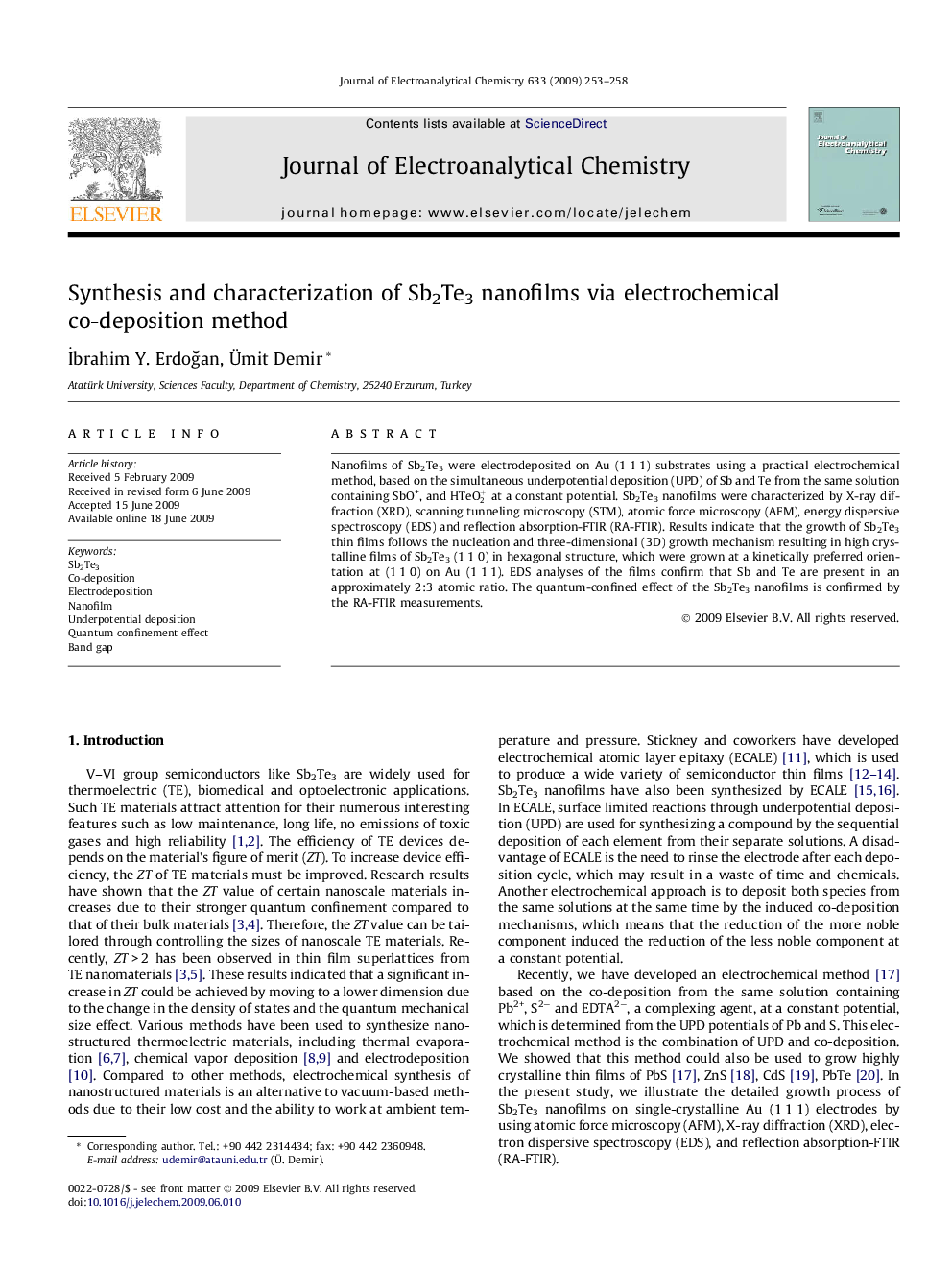| Article ID | Journal | Published Year | Pages | File Type |
|---|---|---|---|---|
| 220212 | Journal of Electroanalytical Chemistry | 2009 | 6 Pages |
Nanofilms of Sb2Te3 were electrodeposited on Au (1 1 1) substrates using a practical electrochemical method, based on the simultaneous underpotential deposition (UPD) of Sb and Te from the same solution containing SbO+, and HTeO2+ at a constant potential. Sb2Te3 nanofilms were characterized by X-ray diffraction (XRD), scanning tunneling microscopy (STM), atomic force microscopy (AFM), energy dispersive spectroscopy (EDS) and reflection absorption-FTIR (RA-FTIR). Results indicate that the growth of Sb2Te3 thin films follows the nucleation and three-dimensional (3D) growth mechanism resulting in high crystalline films of Sb2Te3 (1 1 0) in hexagonal structure, which were grown at a kinetically preferred orientation at (1 1 0) on Au (1 1 1). EDS analyses of the films confirm that Sb and Te are present in an approximately 2:3 atomic ratio. The quantum-confined effect of the Sb2Te3 nanofilms is confirmed by the RA-FTIR measurements.
